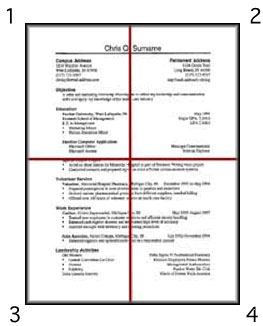Résumé Design Part 1

Welcome to the Purdue OWL
This page is brought to you by the OWL at Purdue University. When printing this page, you must include the entire legal notice.
Copyright ©1995-2018 by The Writing Lab & The OWL at Purdue and Purdue University. All rights reserved. This material may not be published, reproduced, broadcast, rewritten, or redistributed without permission. Use of this site constitutes acceptance of our terms and conditions of fair use.
Résumé Design
You might be asking, why is the design of my résumé so important? Or, if I have a lot of experience, why does my résumé have to look so good? The answer to these questions is simple: employers may rate your ability to do a job based on the content of you résumé and the appearance of your résumé.
Your résumé represents you, and if it looks unprofessional, then an employer might think you are unprofessional. In order to have the best chance to get a job, you want to seem as professional as possible. A professional looking résumé will help you do this.
Employers may only take a few seconds to look at your résumé before deciding to give you an interview or not. To make it past that initial review, you should design your résumé so that employers can read it quickly and easily.
One way to do this is to use the most common design for résumés so employers will know where to look for the information they need. Even though you may want to be different from everyone else applying for the job, you should allow the content of your résumé and your interview to set you apart. A good strategy to use to design a résumé is the four-section (or quadrant) method.
The Four-Section (or Quadrant) Method
Most readers of English begin in the top left side of a page and work their way down in a Z pattern. So, you should design your résumé so that the most important information is at the top or top left of the page. Also, you should balance the text and the white space (empty space where there is no text). To ensure this balance, split up your résumé into four-sections, as seen below.

Each of your page sections should have an equal amount of text and white space. Readers typically begin in section 1 first, so you should put your most important information there. You may also center your name and contact information at the top of your résumé and safely assume that employers will begin there.
Click here to download the PDF file containing sample résumés and employment letters.